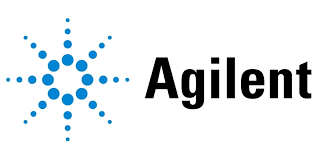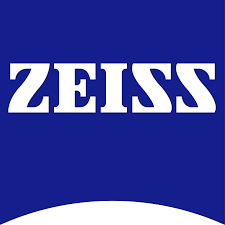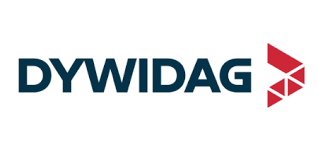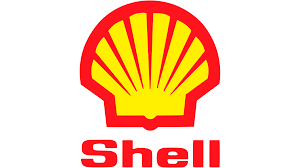Smart Harvest Market Report
Published Date: 02 June 2025 | Report Code: smart-harvest
Smart Harvest Market Size, Share, Industry Trends and Forecast to 2033
This report provides a comprehensive analysis of the Smart Harvest market from 2023 to 2033. It includes insights on market size, growth projections, regional performances, industry trends, and competitive landscape.
| Metric | Value |
|---|---|
| Study Period | 2023 - 2033 |
| 2023 Market Size | $10.50 Billion |
| CAGR (2023-2033) | 6.8% |
| 2033 Market Size | $20.64 Billion |
| Top Companies | John Deere, AG Leader Technology, Trimble Inc., BASF |
| Last Modified Date | 02 June 2025 |
Smart Harvest Market Report (2023 - 2033)
Smart Harvest Market Overview
Customize Smart Harvest Market Report market research report
- ✔ Get in-depth analysis of Smart Harvest market size, growth, and forecasts.
- ✔ Understand Smart Harvest's regional dynamics and industry-specific trends.
- ✔ Identify potential applications, end-user demand, and growth segments in Smart Harvest
What is the Market Size & CAGR of Smart Harvest market in 2023?
Smart Harvest Industry Analysis
Smart Harvest Market Segmentation and Scope
Tell us your focus area and get a customized research report.
Smart Harvest Market Analysis Report by Region
Europe Smart Harvest Market Report:
The European market value in 2023 stands at $3.29 billion, anticipated to double to $6.46 billion by 2033. Sustainability initiatives and stringent regulations on agricultural practices incentivize investments in smart farming technologies.Asia Pacific Smart Harvest Market Report:
In 2023, the Smart Harvest market in the Asia Pacific region is valued at approximately $2.03 billion, projected to grow to $4.00 billion by 2033. The rapid adoption of technology in countries like China and India, alongside government initiatives promoting smart agriculture, are significant drivers.North America Smart Harvest Market Report:
In North America, the Smart Harvest market is estimated at $3.46 billion in 2023, with projections to grow to $6.81 billion by 2033. The region is characterized by high technology adoption, with advanced solutions implemented extensively across industries.South America Smart Harvest Market Report:
The South American market size in 2023 is about $0.72 billion, expected to reach $1.42 billion by 2033. Countries like Brazil and Argentina are increasingly investing in agricultural technology to enhance yields and efficiency, led by their strong agribusiness sectors.Middle East & Africa Smart Harvest Market Report:
The Middle East and Africa market, valued at $0.99 billion in 2023, is expected to grow to $1.95 billion by 2033. The region faces unique agricultural challenges, thus, promoting significant interest in innovation to enhance productivity and food security.Tell us your focus area and get a customized research report.
Smart Harvest Market Analysis By Technology
Global Smart Harvest Market, By Technology Market Analysis (2024 - 2033)
The Smart Harvest market by technology reveals substantial contributions from automation technologies, which dominate with a market size of $6.91 billion in 2023, projected to reach $13.58 billion by 2033. Sensor technologies follow closely with a current size of $2.17 billion and expected growth to $4.27 billion. Software solutions are also significant, growing from $1.42 billion in 2023 to $2.79 billion in the forecast period.
Smart Harvest Market Analysis By Crop Type
Global Smart Harvest Market, By Crop Type Market Analysis (2024 - 2033)
Fruits currently lead the Smart Harvest market with a size of $6.91 billion in 2023, with expectations to rise to $13.58 billion by 2033. Vegetables hold a market size of $2.17 billion, projected to grow to $4.27 billion. Grains also demonstrate potential, increasing from $1.42 billion to $2.79 billion within the forecast timeline, driven by advancements in harvesting techniques.
Smart Harvest Market Analysis By End User
Global Smart Harvest Market, By End-User Market Analysis (2024 - 2033)
Farmers dominate the Smart Harvest market, accounting for $6.91 billion in 2023 with a maintaining share of 65.8% through to 2033. Agribusiness companies form the second significant segment at $2.17 billion, projected to maintain a share of 20.67%. Government agencies also contribute, rising in market size from $1.42 billion to $2.79 billion, focused on implementing policies to enhance agricultural productivity.
Smart Harvest Market Analysis By Geography Usage
Global Smart Harvest Market, By Geography Usage Market Analysis (2024 - 2033)
Geographically, North America shows a prominent usage of smart harvest technologies, with a size of $5.51 billion in 2023 and expected growth to $10.82 billion by 2033. Europe follows closely, anticipated to rise from $2.52 billion to $4.95 billion, highlighting effective use of smart devices across their agricultural landscape.
Smart Harvest Market Analysis By Challenges
Global Smart Harvest Market, By Challenges Market Analysis (2024 - 2033)
The Smart Harvest industry faces challenges such as technology adoption hurdles, with key concerns around costs and training needs. Consequently, in 2023, challenge-related market size amounts to $6.91 billion, expected to rise to $13.58 billion by 2033. Environmental impact concerns also merit attention, currently at $2.17 billion, reflecting ongoing discussions around sustainability in agriculture.
Smart Harvest Market Trends and Future Forecast
Tell us your focus area and get a customized research report.
Global Market Leaders and Top Companies in Smart Harvest Industry
John Deere:
A leading manufacturer of agricultural machinery, John Deere is at the forefront of smart farming innovations, offering advanced automation technologies and analytics.AG Leader Technology:
AG Leader specializes in precision agriculture technologies, providing software solutions and hardware that enable farmers to enhance productivity through data-driven decisions.Trimble Inc.:
Trimble provides comprehensive software and hardware solutions for precision agriculture, increasing the efficiency of farming operations globally.BASF:
BASF leads in agricultural solutions, focusing on crop protection while integrating smart technologies to optimize agricultural outputs.We're grateful to work with incredible clients.









FAQs
What is the market size of smart Harvest?
The smart-harvest market is currently valued at approximately $10.5 billion in 2023, with a projected growth rate (CAGR) of 6.8% up to 2033. This indicates a strong growth trajectory, highlighting the increasing relevance of smart agricultural practices.
What are the key market players or companies in the smart Harvest industry?
Prominent players in the smart-harvest market include global agritech companies, innovative software solution providers, and sensor technology firms. Their strategic partnerships and innovations drive competition and technological advancements, further shaping the dynamics of the industry.
What are the primary factors driving the growth in the smart Harvest industry?
Key growth factors include increasing demand for food security, advancements in agricultural technologies, and government support for sustainable farming methods. Additionally, rising environmental concerns and the need for efficient resource management are pivotal in propelling market expansion.
Which region is the fastest Growing in the smart Harvest?
The fastest-growing region in the smart-harvest market is Europe, projected to grow from $3.29 billion in 2023 to $6.46 billion by 2033. Other notable regions include Asia Pacific and North America, also showing significant growth in smart-harvest adoption.
Does ConsaInsights provide customized market report data for the smart Harvest industry?
Yes, ConsaInsights offers customized market report data tailored to the needs of clients in the smart-harvest industry. This includes detailed insights into segmentations, regional performances, and specific growth drivers relevant to individual businesses or sectors.
What deliverables can I expect from this smart Harvest market research project?
Clients can expect comprehensive reports encompassing market analysis, competitive landscape, segmentation by region and type, forecast data up to 2033, and actionable insights tailored to specific business strategies and objectives.
What are the market trends of smart Harvest?
Current trends in the smart-harvest industry include increased automation, adoption of IoT technologies, data analytics for decision-making, and a shift towards sustainable practices. These trends are reshaping how agribusinesses strategize for the future.
